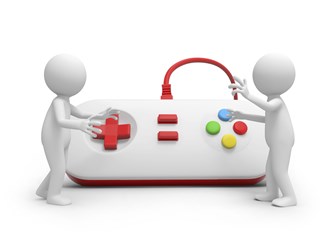5 Ways Gamification Can Work For Your IT Clients
By Rick Delgado, contributing writer

If the goal of a business or organization is to influence the behavior that leads to customers choosing their products or services, few strategies have proven quite as effective as gamification. The basic idea behind gamification is to use mechanics typically found in games to motivate and reward people in specific ways. While this has been used for years in some relatively simple ways (think of the “buy nine and get the tenth one free on your next visit” example), with the rise of cloud computing, mobile devices, and bring your own device (BYOD) policies, gamification is being taken to the next level. Even so, many organizations have found it difficult to truly take advantage of everything gamification has to offer. It’s one thing to learn about the concept; it’s another thing entirely to turn it into a practical strategy. Perhaps the best way to solve this conundrum is to look at what many large organizations are doing to make gamification work for them.
- Employee Training. While most look at gamification as a way to impact customer behavior, the technique can be equally effective for employees. Xerox saw the potential of gamification and has used it as a way to train their employees. Xerox uses Qstream, an app which can best be compared to Trivia Crack. The idea is to get employees to use the app to answer questions as a way to compete with each other. Leader boards show who is currently winning, and the eventual victors get prizes. As fun as the competition can be, the main reason Xerox does it is to teach employees about best practices in a way that will stay with them long afterwards. And employees are responding with a 94 percent participation rate among Xerox sales teams.
- Recruitment And Hiring. Gamification can also be an effective tool for finding the organization’s next employees. For years, the U.S. Army has used a video game called America’s Army as a way to bring in new recruits and educate people about the army. The game has proven to be very popular, reaching millions of people since it was first developed. Google used gamification as part of its recruitment efforts as well. The company posted a billboard with a difficult math question. People who could solve it were eventually led through several other challenges before being given a job application. Given the success of this strategy, other companies have followed suit.
- Problem Solving. Gamification isn’t just helping companies find new people or keep customers; it’s helping solve some of the world’s biggest problems. The World Bank uses a game called Evoke as an educational tool to help young people come up with solutions to issues like poverty, hunger, and disease. By completing quests and missions, players can gain more than just insight; they also have the chance to receive funding for new entrepreneurial efforts, travel scholarships, and mentorships. The game is merely the gateway to vast new opportunities.
- Customer Loyalty And Participation. One of the most common uses of gamification is to improve customer loyalty and participation, and few businesses do it as well as eBay. The entire platform has transformed into a type of game, with the actual bidding turning into a competition with an eventual winner. Sellers can also participate as well with improved seller statuses, which can in turn drive up their own sales. This is based off of feedback scores, and when given a score of 10, they get a yellow star award. All of these features promote more activity on the part of buyers and sellers.
- Goal Setting And Achievement. Gamification can also be used to help employees set and reach goals. Hyatt Hotels uses a program designed to reward employees who achieve certain goals with virtual tokens, which can then be used in a special game that can lead to rewards. By completing these work objectives, employees not only get incentives, but they can improve their performance, thereby helping the company. The program helps employees organize their goals, giving them the motivation to reach them.
These are just a few of the practical uses of gamification currently employed by large organizations all over the world. As the strategy continues to evolve and more people understand it, new innovative ideas will likely surface, making gamification that much more effective in driving a desired behavior. When put to use in an appropriate way, gamification can be the difference between a highly successful program and one that suffers from problems and lack of enthusiasm.
